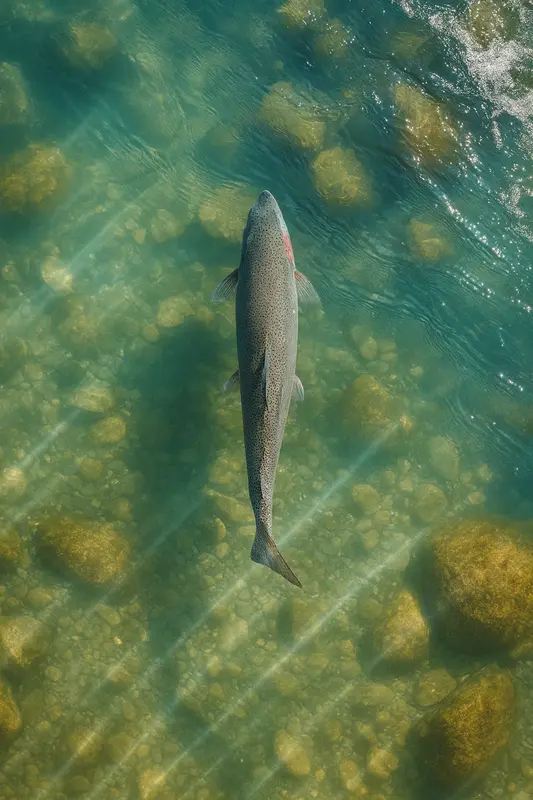Spey : The Basics

Introduction to Spey Fishing
Spey fishing is a fly fishing technique that utilizes a two-handed rod and specialized casting methods to achieve long-distance casts without extensive backcasting space. Originating from the River Spey in Scotland, this method is particularly effective for targeting species like salmon and steelhead in large rivers.
Spey Rods
Spey rods are longer than traditional fly rods, typically ranging from 12 to 15 feet. The extended length allows for longer casts and better line control. These rods are designed for two-handed casting, providing the leverage needed for the unique casting techniques used in spey fishing.
Key Features:
- Length: 12 to 15 feet
- Line Weight: Varies depending on target species and casting style
- Action: Can range from slow to fast, affecting casting dynamics
For beginners, shorter rods (10 to 12 feet) are often recommended as they are more forgiving and easier to handle. :contentReference[oaicite:0]{index=0}
Casting Styles
Spey casting encompasses various techniques, each suited to different conditions and objectives. The primary casting styles include:
Single Spey: A dynamic cast ideal for upstream winds and situations requiring a quick change of direction.
Double Spey: A more deliberate cast suitable for downstream winds and when there's ample space for a larger casting arc.
Snap T and Circle Spey: Variations used to reposition the line efficiently, especially when dealing with confined spaces or tricky currents.
Each casting style has its advantages, and mastering multiple techniques allows anglers to adapt to varying river conditions.
Line Systems: Heads and Running Lines
Spey lines are typically composed of a shooting head and a running line. The shooting head is the weighted section that facilitates casting, while the running line is a thinner, lighter line that follows the head.
Types of Shooting Heads:
| Type | Description | Ideal For |
|---|---|---|
| Skagit | Short, heavy heads designed to cast large flies and heavy sink tips. | Winter steelheading and situations requiring deep presentations. |
| Scandi | Longer, more tapered heads that allow for delicate presentations with smaller flies. | Summer fishing and scenarios where a subtle approach is beneficial. |
Selecting the appropriate shooting head depends on factors like target species, fly size, and water conditions. :contentReference[oaicite:1]{index=1}
Leaders and Tips
The leader connects the fly line to the fly and plays a crucial role in fly presentation. In spey fishing, leaders can vary significantly based on the line system and fishing conditions.
Leader Configurations:
- Skagit Systems: Often utilize short, stout leaders (3-5 feet) to turn over heavy sink tips and large flies.
- Scandi Systems: Typically employ longer, tapered leaders (10-15 feet) for smooth energy transfer and delicate presentations.
Adjusting leader length and material can influence fly depth and action, allowing anglers to fine-tune their approach based on water conditions and fish behavior.
Recommended Resources
For a visual demonstration of spey casting techniques, consider the following tutorial:
This video provides a comprehensive overview of fundamental spey casting methods.
The World's Most Complete Fishing Resource
We're building the ultimate fishing encyclopedia—created by anglers, for anglers. Our articles are created by real experienced fishermen, sometimes using AI-powered research. This helps us try to cover every species, technique, and fishing spot imaginable. While we strive for accuracy, fishing conditions and regulations can change, and some details may become outdated or contain unintentional inaccuracies. AI can sometimes make mistakes with specific details like local access points, parking areas, species distributions, or record sizes.
Spot something off? Whether it's an incorrect boat ramp location, wrong species information, outdated regulations, or any other error, please use the "Help Us Improve This Page" section below. Your local knowledge makes this resource better for every angler.
Explore Related Topics
Discover more articles to deepen your knowledge
Curating articles for you...
Create your own Research Page using AI
Try our AI assistant for free—sign up to access this powerful feature
